The difference between the dataset Vs database is very important to make the right decisions. For managers and business owners, the understanding of the differences between these two entities plays a vital role in strategic decision-making.
What is a Dataset?
A dataset is nothing but an aggregation of data that is usually arranged within some sort of structure.
Such datasets cover various types of information, namely numerical data, textual content or images and audio recordings. Datasets are used in research activities, data analysis and machine learning projects. They can be stored as spreadsheets or CSV files or within databases. Data organization within datasets can be in the form of tabular structures with rows and columns or as a collection of observations that are relevant to statistical analysis.
The roots of datasets are diverse, ranging from surveys to experimental attempts or already existing databases. These datasets are multidimensional, from training machine learning algorithms to data visualization tasks and statistical analysis. It can be published publicly or privately in an attempt to help reproduce or validate research findings.
What is a Database?
Conversely, a database constitutes a systematic compilation of structured data, accessible and storable in electronic formats. Databases are a structured medium for storing, managing and retrieving data within computer systems that can hold textual content, numerical values or images in any other format.
Their applications cover different fields, such as customer information management in e-commerce websites; stock control for retail companies and scientific experiment findings storage.
Databases manifest in various forms, encompassing relational databases, document databases and key-value stores tailored for specific application domains.
For instance, relational databases are good at structuring data in tables with predefined schemas while document databases perform better when dealing with unstructured data such as JSON documents.
Comparison Of Datasets Vs Databases Across Key Factors
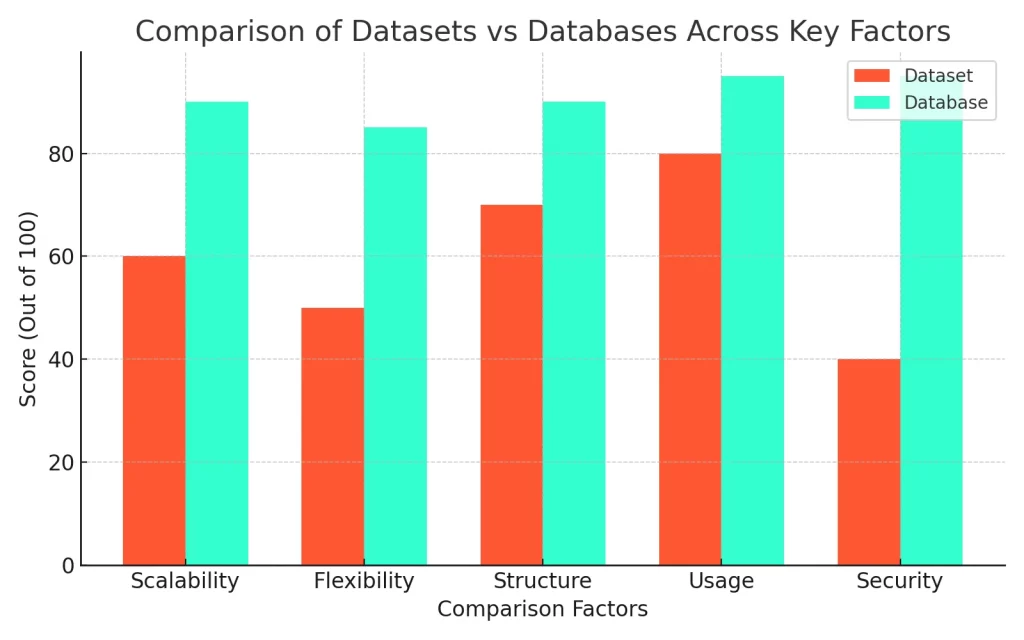
Here is the comparison bar chart differences between Datasets vs Databases across key factors such as Scalability, Flexibility, Structure, Usage, and Security
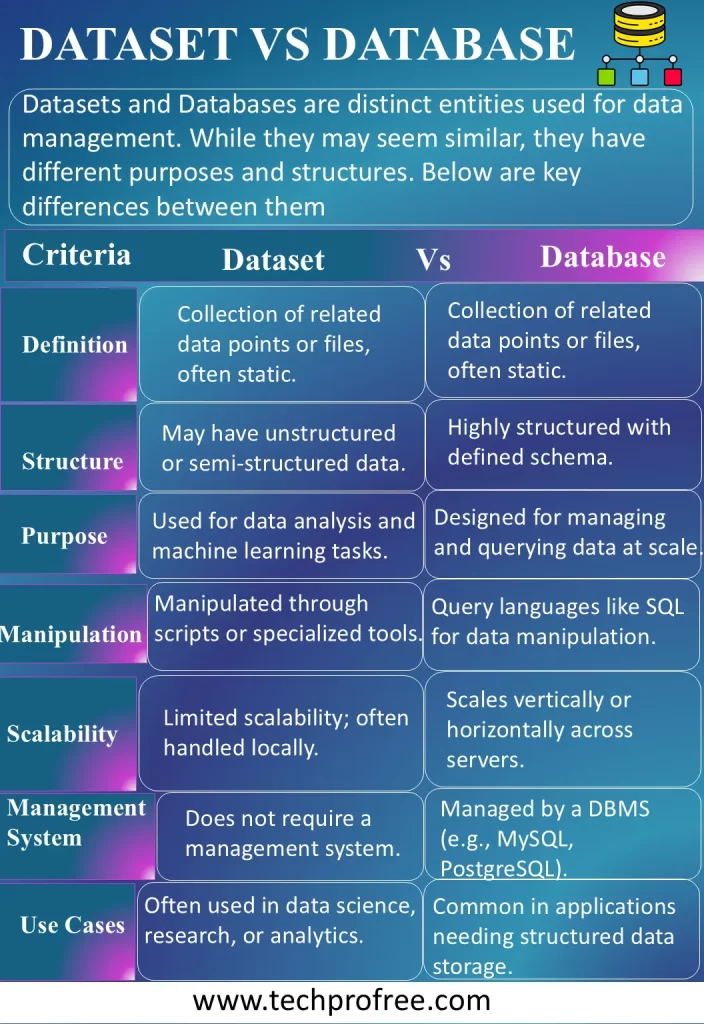
Database Management Systems (DBMS)
This capability is facilitated by specialized software known as Database management systems (DBMS), offering tools for interacting with stored data.
Important DBMS include MySQL, SQLite, Oracle and SQL Server each designed for different purposes to meet needs of varying nature.
Difference between Dataset Vs Database
Dataset Vs Database
The difference between dataset Vs database covers fundamental differences across different dimensions, which are vital in making informed decisions within organizational settings. Exploring each of these differences results in valuable insights into their individual roles and functionalities. Here are several of them listed below…
Purpose
The core of the difference between datasets and databases lies in their fundamental purpose.
- A dataset works similarly to a static picture, capturing information at some point in time just like taking a snapshot.
- On the contrary, a database reflects the dynamics of a video which is constantly changing to accommodate new information as organizational activities unfold.
Structure
- The structural differences between datasets and databases provide a foundation for the complexity difference. Sets of data usually have a very simple tabular or list-like structure, which makes it easy to represent the information like in a spreadsheet.
- On the other hand, databases demonstrate a complex structure that is capable of handling various and interrelated data types like an intricate filing system.
Usage
The utilization paradigms of datasets and databases also help to delineate their roles in organizational structures.
- Datasets mostly have specific analytical, research or machine learning training purposes and act as raw material for projects requiring static datasets.
- While databases form a core of daily operational functionalities which include tasks from recording transactions to inventory management.
Flexibility
Another essential differentiator between datasets and databases is flexibility.
- Datasets are relatively static, with few changes after creation which is ideal for tasks requiring constant data inputs like analysis.
- Databases are dynamic by nature with real-time updating and modifications required for agile business management.
Scalability
The scalability aspect characterizes the ability of datasets and databases to grow.
- Datasets are often not scalable, which is limited in terms of their fixed volumes like a book.
- Databases are designed with scalability in mind and can grow to accommodate growing data volumes as well as complex queries much like an expandable filing cabinet.
Accessibility and Security
- Datasets are distinguished from databases by the dimensions of accessibility and security. Because of their static nature, datasets require minimal access requirements and are commonly shared or used for specific analytical attempts with little focus on stringent security measures.
- On the other hand, databases that act as a keystone of operational resilience require stringent security measures involving multi-layered access controls to protect confidential organizational information.
Understanding the differences between datasets and databases is crucial for stakeholders involved in organizational decision-making processes. Although datasets are static snapshots that make analytical pursuits possible, databases become dynamic repositories essential to operational efficiency and organizational success. The use of the right tool as dictated by situational needs is central to enhancing business operations and improving operational effectiveness.
Conclusion
It is not easy to navigate the data landscape, but knowing the essential differences between datasets and databases enables informed decision-making. Datasets provide great views for analysis and machine learning while databases are dynamic centers of daily operations. Their different goals, structures, utilization and adaptability point out the necessity of choosing a proper tool for every task. Their distinct roles are also highlighted by scalability, accessibility and security concerns. Keep in mind that datasets are great at time-bound events, whereas databases strive for constant change and adaptation. Through leveraging their distinctive advantages, you can find precious insights, reduce the operational complexity and pave the way for a data-driven success in your organization.

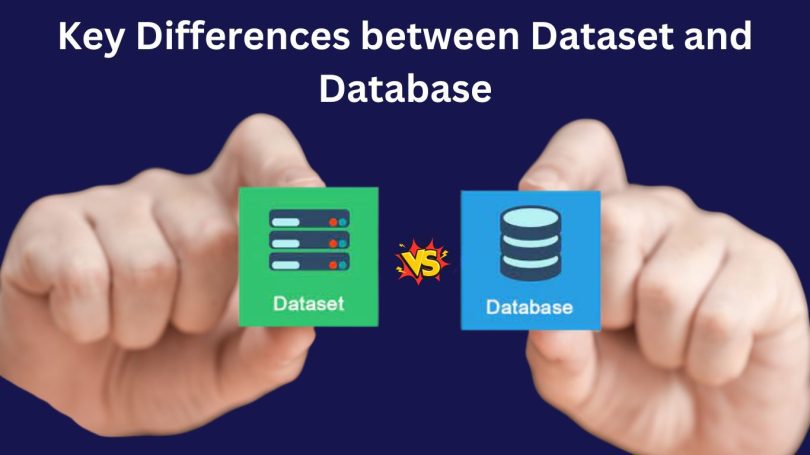
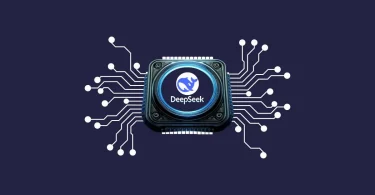
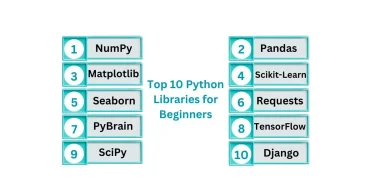
Leave a Comment